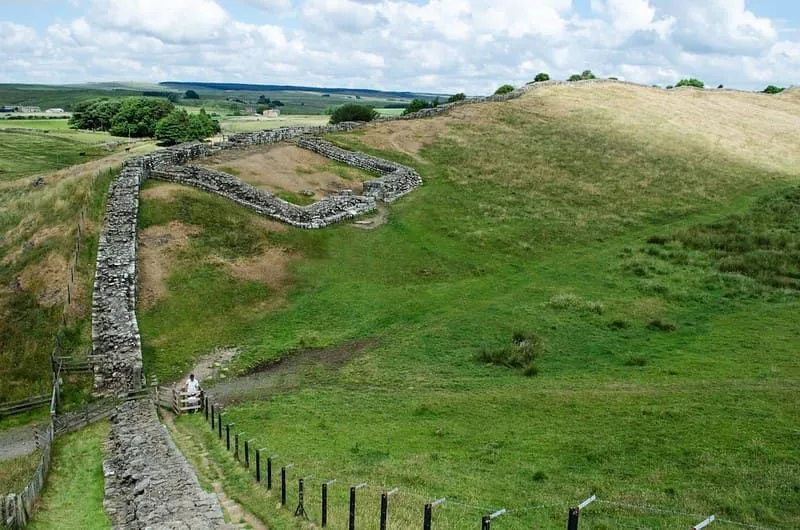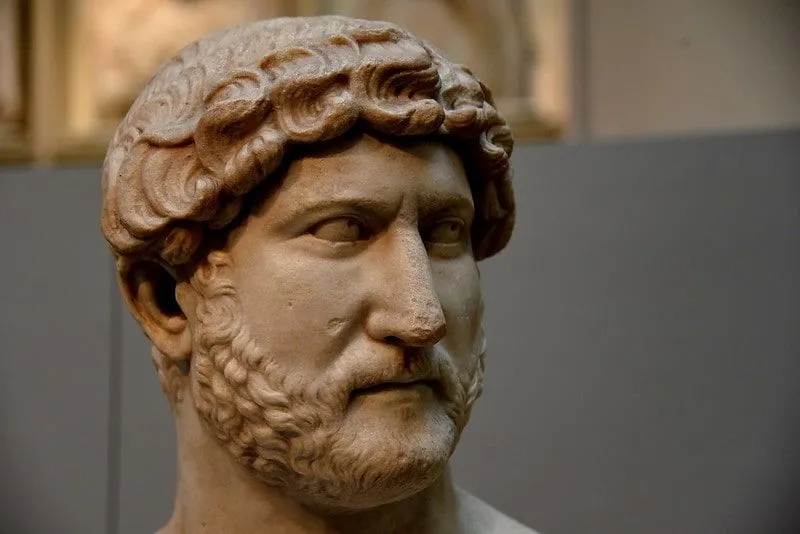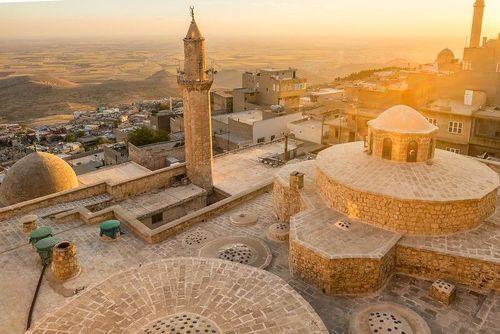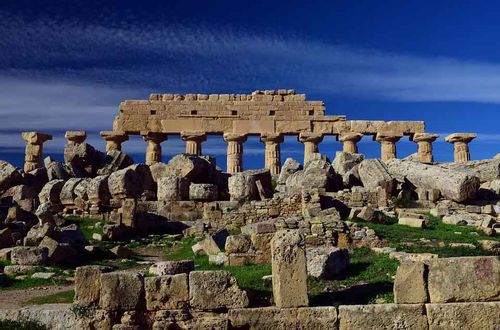FOR AGES 7 YEARS TO 11 YEARS
Image © pxfuel.
Constructed by the Romans, Hadrian’s Wall is a stone structure in the north of England.
The Romans annexed what is now England and Wales in AD 43. The British tribes were quickly conquered, but going any further north was going to be an issue.
When the Romans tried to invade Caledonia (Scotland), the Pictish tribes held their own and whilst they were defeated in many battles, they won the war. When emperor Hadrian came to Britain in AD 122, he ordered the construction of a wall, Hadrian’s Wall, to keep the Scots out.
The Roman Empire invaded most of Western Europe (France, Greece, Spain, Germany...) as well as the Middle East and North Africa. As part of the KS2 History curriculum, the Romans are a great subject to get stuck in. Looking at facts about Hadrian's Wall will help your kids learn about the fascinating history of Roman Britain and the great construction of the Empire. Londinium (modern day London) was the capital of the British part of the Empire, and there is still a lot of Roman history to be discovered all over Britain.

Image © George Hodan under License: CC0 Public Domain
Hadrian's Wall is a coast to coast stone wall in Northern England built by the Romans. Constructed to keep the Scottish tribes out of Roman Britain (what is now England and Wales), part of Hadrian's Wall can still be seen today, nearly 2000 years later.
The construction of the Wall started in 122 AD and it took at least six years to complete. This is the largest Roman construction anywhere and goes to show how scared of the Picts tribes of Scotland (Caledonia) the Romans were.
Spanning the northern boundary of Roman Britain, the Wall was 117 kilometres (73 miles) across, going from the North Sea to the Irish Sea. Standing tall at fifteen feet, it was also pretty wide: between eight and ten feet.
Built by three legions of soldiers on the orders of the Roman emperor Hadrian, it was a great way to control the comings and goings of people, tax whoever wanted to enter and keep the Scots from invading. The “army of Britain” are recorded as having built the Wall. Three legions of trained troops were the main builders. Each legion was about 5,000 infantrymen.
Roman soldiers lived in 14 forts constructed along the length of the Wall, the most famous of which is Housesteads, a 5acres (2 hectares) fort in Northumberland.
Hadrian's Wall was a great defensive barrier, it had gates every Roman mile (a thousand paces) with milecastles (guard posts) protecting it and two turrets (observation towers) in between each milecastle. A ditch was also dug in front of it. Auxiliary troops from the north-west of the Roman Empire manned the Wall after its construction and lived in the forts which were built alongside it.

Image © Osama Shukir Muhammed Amin
Hadrian was a Roman emperor who was born in Rome in AD 76. Becoming emperor in AD 117, he ruled for 21 years. Emperor Hadrian came to the British Isles in AD 122 as part of his tour of the western provinces of the Empire. Hadrian’s policy as an emperor was to defend and keep what he already had. Emperor Hadrian’s rule was not one of expansion. The 73-mile-long wall was probably ordered during the AD 122 visit to protect the Roman Empire’s interests. It took its name from the man who commanded his legions to build it: Hadrian’s Wall.
The Roman armies began their British conquest in AD 43 when the emperor Claudius quickly defeated the English tribes. Forty years later, 20,000 Roman soldiers led by the emperor Agricola tried to take on Caledonia (Scotland). The Roman Empire invaded Scotland a few times but they never managed to control the territory. The Roman Empire would never include Scotland.
The next Roman emperor, Antoninus Pius, abandoned the Wall and started a new one 160 kilometres (100miles) north, in the Scottish Lowlands. The Antonine Wall was 40 Roman miles and had even more forts than Hadrian's Wall!
The Antonine Wall was abandoned for good after 20 years and the Romans went back to Hadrian’s Wall. It was in use for 300 years.
By AD 410, the Romans had all but gone from Britain and the Wall was abandoned. It might have been manned by some local Britons, but eventually, the wall became a source of stones for local buildings.
1. The Romans never conquered the Scots, but successive emperors tried, meaning the border (and therefore the Walls) used varied depending on who was in charge.
2. Hadrian's Wall has been a UNESCO World Heritage Site since 1987.
3. You can go and walk alongside what is left of the Wall, following the National Trail footpath opened in 2013 between Wallsend and Bowness-on-Solway.
Read The Disclaimer
At Kidadl we pride ourselves on offering families original ideas to make the most of time spent together at home or out and about, wherever you are in the world. We strive to recommend the very best things that are suggested by our community and are things we would do ourselves - our aim is to be the trusted friend to parents.
We try our very best, but cannot guarantee perfection. We will always aim to give you accurate information at the date of publication - however, information does change, so it’s important you do your own research, double-check and make the decision that is right for your family.
Kidadl provides inspiration to entertain and educate your children. We recognise that not all activities and ideas are appropriate and suitable for all children and families or in all circumstances. Our recommended activities are based on age but these are a guide. We recommend that these ideas are used as inspiration, that ideas are undertaken with appropriate adult supervision, and that each adult uses their own discretion and knowledge of their children to consider the safety and suitability.
Kidadl cannot accept liability for the execution of these ideas, and parental supervision is advised at all times, as safety is paramount. Anyone using the information provided by Kidadl does so at their own risk and we can not accept liability if things go wrong.
Kidadl is independent and to make our service free to you the reader we are supported by advertising.
We hope you love our recommendations for products and services! What we suggest is selected independently by the Kidadl team. If you purchase using the buy now button we may earn a small commission. This does not influence our choices. Please note: prices are correct and items are available at the time the article was published.
Kidadl has a number of affiliate partners that we work with including Amazon. Please note that Kidadl is a participant in the Amazon Services LLC Associates Program, an affiliate advertising program designed to provide a means for sites to earn advertising fees by advertising and linking to amazon.
We also link to other websites, but are not responsible for their content.
Was this article helpful?



Browse Category

We’ll send you tons of inspiration to help you find a hidden gem in your local area or plan a big day out.



Check your inbox for your latest news from us. You have subscribed to:
Remember that you can always manage your preferences or unsubscribe through the link at the foot of each newsletter.